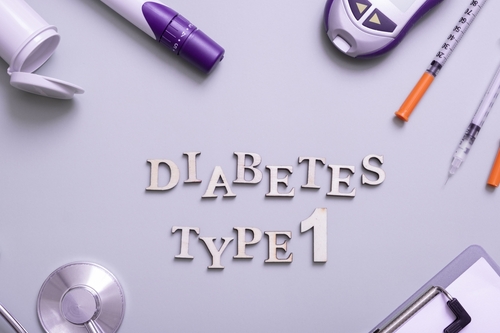Dr. Brad Bowman, Healthgrades: 24 Hospitals that Excelled During the COVID-19 Pandemic
By Rob Dillard - Last Updated: May 10, 2024It’s been well over two years since the world forever changed due to the COVID-19 pandemic. The rapid spread of the virus put a new, and significant strain on hospitals throughout the country. While most hospitals performed well, some excelled more than others. Healthgrades recently ranked the Leading Hospitals in Early COVID Care.
Using inpatient data from CMS for almost every hospital in the country, Healthgrades identified 24 U.S. hospitals that provided exceptional care while treating the highest volumes of coronavirus patients during the first wave of the pandemic. Healthgrades connected with leaders of several hospitals featured on the list to gain their shared perspectives on the strategies deployed to successfully deliver care, and how they were able to best support doctors and nursing staff during challenging times.
DocWire News spoke with Dr. Brad Bowman, Chief Medical Officer, Healthgrades, about how the list was compiled, and which 24 hospitals made the cut.
DocWire News: Can you provide us with some background on yourself?
Dr. Brad Bowman: I went to medical school at University of Washington in Seattle, trained in internal medicine. I was a software developer before I went to medical school, planned on doing medicine. I did my residency at Portland, Oregon. During my residency I also taught at Clinical Informatics at Oregon Health and Sciences University, started a software company. Software company was acquired by WebMD. Went to WebMD, met my former CEO there, who I followed a Healthgrades. And I guess that’s whirlwind of where I’ve been. I love clinical medicine, and I’m the result of a hobby that got out of control and I’m just seeing where this is going.
Talk to us about Healthgrades, and its rating system.
Yeah. And I guess that was the one thing I would hope we were going to talk a little bit about here today, because this early COVID piece is very different than what we traditionally do at Healthgrades and stuff. And I can give you the backstory out of the origin story if you will, on that, if you’d like. But traditionally what we do is we rank hospitals based on only two criteria, death and complications. Those are the only two clinical indicators we use. We don’t have a popularity or reputation component or a subjective component to what we do. We look at hospitals on those two things specifically.
We then risk adjust the case mix of a hospital based on demographics and comorbidities to determine a predicted number of deaths and complications for 31 clinical cohorts that we rank. We then compare those to the national averages. And then we measure the actual versus the predicted in our hospital outcomes. And essentially we use a 1.650 standard deviations from the mean to determine our five-star hospitals versus our one-star hospitals, and stuff like that.
Talk to us about how you assessed these hospitals, and what you found.
I think so, obviously I wasn’t there on the front lines, whatever. But what we did see, and I guess where this story that wrote started, was really one aspect of this was it was almost like a virtual water cooler meeting, where somebody commented on how COVID patients were being unevenly distributed to healthcare facilities. Meaning that many of us had seen in our local markets that there was either a Magnet hospital or some other hospitals that were becoming the designated COVID hospitals, whereas other hospitals were seeing very few COVID patients.
And you could speculate why this may be. I mean, these tended to be larger institutions with very large ICUs, probably had lots of ventilators around and that kind of stuff as well. And we also saw even the hospitals that weren’t seeing a lot of COVID patients were oftentimes now seeing overflow of routine chronic care and other stuff that would’ve been normally being seen in these other institutions that were seeing mostly COVID patients. So it’s not as if they weren’t contributing or participating, they just weren’t the ones that were treating the COVID patients themselves.
And so from there, and this was really just our own internal curiosity, this was not intended to be anything more than that. We just thought, “Wouldn’t it be interesting to go look at the data and see which hospitals …” Originally our premise was the most in the fight and fought the best fight. And by that we then interpreted it to mean that saw the highest COVID patient volume and had the lowest mortality rates from that patient volume.
We limited ourselves to September, or actually January through September of 2020, because that’s the only data that we have from CMS so far. And so again, this was also limited to just CMS patients, so primarily 65 and over. These were the older COVID patients and these were the patients that had the highest mortality rates. What we weren’t able to determine from the data, whether they were an ICU patient, whether they were a med surg patient, that type of stuff as well. We weren’t really able to look at a risk adjust by comorbidities and stuff to see if they had sicker patients and that sort of … There’s a lot of unknowns in this. So there may be … We really can’t look at the case mix between this. We really can’t look at the comorbidities, that type of stuff. So there’s a lot of limitations, which is why this really isn’t a scientific study. We can’t control for a lot of these variables.
And probably the other biggest variable was that there was also uneven distribution of COVID in the US at that time. Certain places were seeing a lot more COVID cases than other Metro areas and stuff like that. It wasn’t an even playing field for measuring hospitals to hospitals and stuff, because some hospitals had a lot of COVID patients and other areas had very few. That’s why we wanted to not, in any way, imply that these hospitals did the best, these hospitals did better than others, that there wasn’t others out there that did as well as this. All that we can really [inaudible 00:05:37] did a really good job. I’m sure there’s lots of other hospitals that did a really good job as well. But based on our simple criteria, we just wanted to recognize these 24 hospitals.
Now what we did is we just first looked at volume, and when we got to about 750 CMS patients, we were down to 48 hospitals that had that level of volume at the end. Then when we went and we looked at the average mortality rate, which turned out to be 24.6, so extraordinarily high mortality rate in this older population in an early COVID. Now this was also limited a little bit because initially there was no code for COVID so it had to use another code, so that wasn’t clean as all. We know that there’s some other patients mixed in here that aren’t just COVID because of early on the billing codes. Then the billing codes evolved over time for COVID as well, so we used a collection of billing codes that had used for COVID historically.
When we then looked at the 24.6 hospitals that had a lower mortality rate for that, that generated our final list. And so it’s interesting. There’s some other exceptions in there just as it relates to hospitals. For example, NYU Columbia saw a lot of COVID patients but isn’t in our data because they report out through NYU Cornell. So there’s a parent-child relationship between these hospitals. And there was in some of these hospitals as well that created the extraordinary volume and stuff. And it’s just a function of how those institutions bill Medicare, and that was the data set that we were looking at.
But the other thing that we tended to see is there was a very strong East Coast representation on our list. And so I think this is where it’s, we answered our question and now all these other questions just emerged and it was fun to talk about it and try to figure out what we were seeing there and stuff. One of the things we found out looking at this is hospitals in more densely populated areas tend to be bigger. And these were the hospitals that’s the institution.
What we tended to see, the East Coast far more densely populated than most areas in the West Coast, the East Coast tended to have bigger hospitals. And we were looking at hospital volume and stuff like that, so there is probably an inherent bias towards larger institutions and hospitals, which most of which tended to be on the East Coast. West Coast tends to have smaller hospitals, but more of them. And they more match the population density and stuff and distance from patients to hospitals and those sort of things as well. Which was fascinating for us, because these were just things that we never directly sort thought about before and discovered as just wading through the COVID data.
But that’s the methodology. It’s really not much more sophisticated in the back of an envelope type of thing, but it was an interesting question to us. And at the end of it we thought it might be interesting to others as well, so we just wanted to share it. And more than anything, we just wanted to recognize these hospitals that saw such a high volume of COVID patients and somehow managed to achieve below average mortality rates.
Which 24 hospitals made the list?
The hospitals on our list include Orlando Health, Orlando Regional Medical Center, Houston Methodist Hospital, AdventHealth Orlando, St. Joseph’s Hospital, Baton Rouge General, Northeast Georgia Medical Center Gainesville, Temple University Hospital, Ascension Providence Hospital, Southfield Campus, Methodist Hospital in San Antonio, Advocate Christ Hospital and Medical Center, Oak Lawn, Baptist Health of Miami, Yale New Haven Hospital, Lakeland Regional Medical Center, Our Lady of the Lake Regional Medical Center, Baton Rouge, Beaumont Hospital, Royal Oak, Memorial Hermann Southwest Hospital, Houston, Henry Ford Hospital, Detroit, Stony Brook Hospital, Stony Brook, Baptist Medical Center, San Antonio, Lenox Hill Hospital, New York, Oschner Medical Center, New Orleans, NYU Langone, Health Tisch Hospital, New York, Northshore Medical Center, Miami, and NewYork-Presbyterian Weill Cornell Medical Center, New York.
What strategies were employed by these hospitals to help them perform so well during the height of COVID?
Yeah, it was interesting. I mean, what they spoke about the most was first and foremost, communication was the most … For me it was interesting, the most common theme across all of this is we really just started communicating. Meaning executives and leadership with the medical staff and that sort of stuff, immediately formed these open lines of communications. And there seemed to be also the hospitals that were able to adapt and create new care models dynamically, on the fly. And a lot of this I think was because of the communication that they kept emphasizing over and over again.
The other common theme was about supporting the care providers. There seemed to be a consistent message that leadership really focused on taking care of the clinicians, the nurses, all of the hospital staff as well. Oftentimes folks coming back into front line support positions, patient care, executives now coming in and helping out with patient care and stuff like that, which was really interesting. As well as making sure that they had plenty of rest and they had all the PPE that they needed.
They brought other clinicians in from other departments and rotated them through care, playing out a position, if you will, to provide the folks that were getting the intensivist and the folks that I think were having the heaviest workloads and stuff, people came from other specialties to help offload some of the burden and stuff like that. I think it was just a combination of really creative things, but it seemed to be this tight collaboration though between hospital management leadership and the medical staff at these institutions that made it really work.







 © 2025 Mashup Media, LLC, a Formedics Property. All Rights Reserved.
© 2025 Mashup Media, LLC, a Formedics Property. All Rights Reserved.